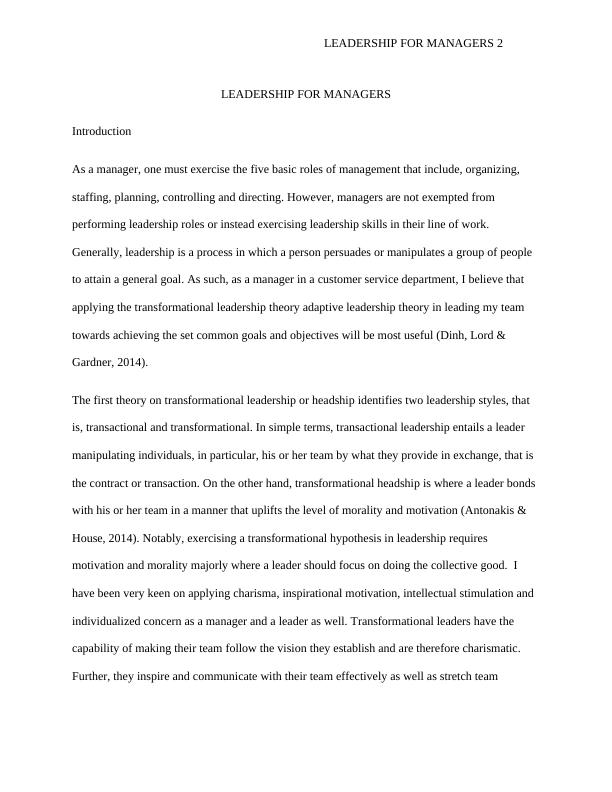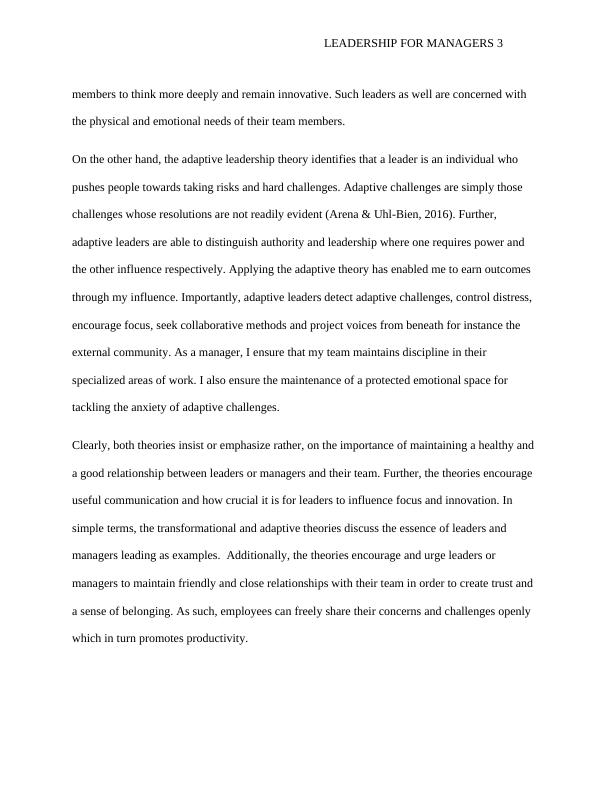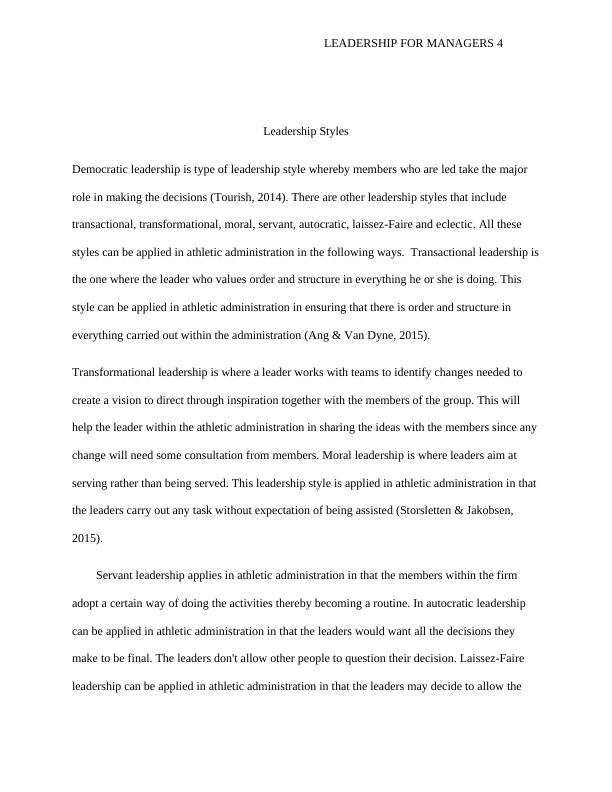Leadership for Managers: Theories, Styles, and Importance
Write a 2000-word reflective journal on the concepts and theories of leadership, leadership styles, importance of leadership qualities for managers, and the application of leadership in teams and organizations.
13 Pages3479 Words432 Views
Added on 2023-06-07
About This Document
This article discusses the different leadership theories, styles, and their importance in managing teams and organizations. It covers the transformational and adaptive leadership theories, democratic leadership, and other leadership styles. It also emphasizes the importance of leadership qualities for managers and the application of different leadership approaches depending on the circumstances and tasks ahead. The article concludes by recommending the use of multiple management styles amongst leaders as the most effective approach in management.
Leadership for Managers: Theories, Styles, and Importance
Write a 2000-word reflective journal on the concepts and theories of leadership, leadership styles, importance of leadership qualities for managers, and the application of leadership in teams and organizations.
Added on 2023-06-07
ShareRelated Documents
End of preview
Want to access all the pages? Upload your documents or become a member.
Application of Leadership Theories in FMCG Industry
|7
|1238
|73
How Transformational and Democratic Leadership Styles Influence Employee Performance
|6
|1296
|360
Trait Theory of Leadership management
|9
|2152
|278
Personal Leadership Theory - Assignment
|5
|1002
|25
Professional Leadership Practice
|4
|733
|400
Leadership Theories and Approaches
|9
|2187
|2




